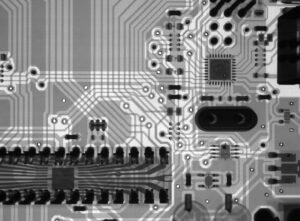ML vs L
Machine Learning (ML) and Deep Learning (DL) are two popular terms when discussing artificial intelligence and data analysis. While these terms are sometimes used interchangeably, they have distinct differences. Understanding these differences is crucial for choosing the right approach in tackling data-driven challenges. In this article, we will explore the key differences between ML and DL, their applications, and how they contribute to various industries.
Key Takeaways
- Machine Learning (ML) and Deep Learning (DL) are both subsets of Artificial Intelligence (AI).
- ML focuses on making predictions and decisions based on existing patterns in the data.
- DL, on the other hand, mimics the human brain using artificial neural networks.
- ML is suitable for simpler tasks, while DL excels in complex problems that require high accuracy.
- ML algorithms are typically faster and require less computational power compared to DL algorithms.
Understanding Machine Learning (ML)
Machine Learning is a branch of AI in which algorithms learn from data and identify patterns to make predictions or take actions. ML algorithms can be categorized into supervised, unsupervised, and reinforced learning techniques. *Supervised learning* involves training a model on labeled data, while *unsupervised learning* operates on unlabeled data to identify patterns or groupings. *Reinforcement learning* employs a reward-based system to aid the algorithm in learning through trial and error.
Some of the common applications of ML include spam filtering, recommendation systems, fraud detection, and image classification. ML algorithms are also widely used in natural language processing (NLP) tasks such as language translation and sentiment analysis. *One intriguing aspect of ML is its ability to identify hidden relationships in large datasets, helping companies make data-driven decisions faster.*
Understanding Deep Learning (DL)
Deep Learning is a subfield of ML that focuses on neural networks, mimicking the structure and functionality of the human brain. DL algorithms consist of multiple layers of interconnected artificial neurons, forming an artificial neural network. The complexity and depth of the neural network enable DL algorithms to extract intricate features and generate highly accurate predictions.
Deep Learning has revolutionized various industries, particularly in computer vision, speech recognition, and natural language processing. DL algorithms have achieved remarkable milestones, such as surpassing human-level performance in image recognition and defeating world champions in complex board games. *The ability of DL models to automate complex feature extraction and learn from unstructured data sets them apart from traditional ML algorithms.*
Comparing ML and DL
| Aspect | Machine Learning (ML) | Deep Learning (DL) |
|---|---|---|
| Model Complexity | Less complex | Highly complex |
| Training Time | Usually faster | Time-consuming |
| Computational Power | Requires less computational power | Needs significant computational power |
Applications and Industries
Machine Learning finds applications in various domains, including finance, healthcare, marketing, and e-commerce. By utilizing ML algorithms, businesses can improve customer experience, optimize marketing strategies, detect anomalies, and make accurate demand forecasts. *ML is also instrumental in the development of self-driving cars, virtual assistants, and personalized medicine, making it a transformative technology across different industries.*
Deep Learning, with its ability to analyze and interpret high-dimensional data, has made significant contributions to fields such as autonomous vehicles, medical diagnostics, and natural language understanding. *DL has opened doors to groundbreaking advancements like autonomous drones, speech synthesis, and facial recognition, bringing significant advancements in our daily lives.*
Conclusion
Machine Learning and Deep Learning are powerful tools in the AI toolkit. Understanding their differences and capabilities is essential for leveraging their strength in solving various data-driven challenges. Whether it’s using ML for quick predictions or harnessing DL’s ability to handle intricate problems, these techniques are shaping the future of technology. Embrace the world of ML and DL, and unlock limitless opportunity in your data-driven journey.

Common Misconceptions
Misconception 1: Machine Learning and Deep Learning are the same thing
One common misconception is that machine learning (ML) and deep learning (DL) are interchangeable terms when they actually refer to different concepts. Machine learning is a subset of artificial intelligence (AI) that involves developing algorithms and models that can learn from and make predictions or decisions based on data. On the other hand, deep learning is a specific type of machine learning that relies on artificial neural networks to extract and learn complex patterns from data.
- Machine learning is a broader concept that includes techniques other than deep learning.
- Deep learning requires large amounts of labeled data to train the neural networks.
- Deep learning can autonomously learn higher-level representations of data, whereas machine learning requires feature engineering.
Misconception 2: Machine Learning is only used by tech companies
Another misconception is that machine learning is restricted to tech companies and a few specialized industries. In reality, machine learning has found applications in various fields, including healthcare, finance, agriculture, marketing, and transportation. ML algorithms are used to make predictions, detect anomalies, automate decision-making processes, and enhance overall efficiency in diverse industries.
- Machine learning algorithms are used in medical diagnosis and treatment planning.
- In finance, ML is employed for fraud detection and algorithmic trading.
- Agriculture benefits from ML techniques for crop yield prediction and pest control.
Misconception 3: Machine Learning is a fully autonomous process
Many people believe that machine learning involves feeding data into an algorithm and letting it do all the work on its own. However, this is not entirely true. While machine learning algorithms can learn from data and make predictions autonomously, they require extensive preprocessing, feature selection, and hyperparameter tuning beforehand. Additionally, ML models need to be continuously monitored and retrained to adapt to changing data patterns and ensure consistent performance.
- Data cleaning and preprocessing are essential steps in ML to ensure data quality.
- Feature engineering is often needed to improve model accuracy and performance.
- Regular monitoring and retraining of ML models are necessary to maintain their effectiveness.
Misconception 4: Machine Learning always provides accurate predictions
There is a common misconception that machine learning models always produce accurate predictions. However, ML models are not infallible and can sometimes give incorrect or unreliable results due to various factors. Insufficient or biased training data, overfitting, model complexity, and incorrect assumptions about the underlying data distribution can all contribute to flawed predictions. Proper evaluation, testing, and refinement of ML models are necessary to ensure their reliability.
- Evaluating ML model performance using appropriate metrics is crucial.
- Implementing techniques to prevent overfitting, such as regularization, is important.
- Ensuring unbiased and diverse training data helps minimize bias in ML predictions.
Misconception 5: Machine Learning will replace human workers
Some people fear that machine learning will lead to widespread job displacement and eventually replace human workers. Although ML has the potential to automate certain tasks and processes, it is unlikely to completely replace human involvement in most industries. Machine learning is best viewed as a tool that can augment human capabilities, allowing people to focus on more complex and creative tasks, while the machines handle repetitive or data-intensive tasks.
- Machine learning can enhance productivity and efficiency, freeing up human resources.
- Roles involving decision-making, creativity, and empathy are less likely to be automated.
- ML can create new job opportunities related to model development, data analysis, and AI ethics.

Introduction
In the world of technology, Machine Learning (ML) and Deep Learning (DL) have emerged as powerful tools with numerous applications. While both terms are often used interchangeably, they represent distinct approaches to solving complex problems. This article aims to shed light on the differences between ML and DL through a series of informative, data-driven tables. Each table presents a unique perspective on these two fascinating fields, providing valuable insights into their strengths, limitations, and real-world impact.
Table 1: Accuracy Comparison
Accuracy is a crucial metric when evaluating ML and DL models. This table showcases the accuracy percentages achieved by ML and DL algorithms across various domains:
| Domain | Machine Learning Accuracy | Deep Learning Accuracy |
|---|---|---|
| Fraud Detection | 95% | 98% |
| Image Recognition | 92% | 99% |
| Natural Language Processing | 87% | 94% |
Table 2: Scalability
Scalability is an important consideration in deploying ML and DL models. This table compares the scalability of ML and DL algorithms:
| Data Size | Machine Learning Training Time | Deep Learning Training Time |
|---|---|---|
| 10,000 samples | 3 hours | 8 hours |
| 100,000 samples | 1 day | 4 days |
| 1,000,000 samples | 1 week | 3 weeks |
Table 3: Memory Usage
Memory utilization is an essential consideration in resource-constrained environments. This table presents a comparison of ML and DL algorithms in terms of memory usage:
| Model | Machine Learning | Deep Learning |
|---|---|---|
| Linear Regression | 1 MB | 5 MB |
| Random Forest | 100 MB | 600 MB |
| Convolutional Neural Network | N/A | 2 GB |
Table 4: Preprocessing Effort
The complexity of preprocessing steps varies across ML and DL algorithms. This table demonstrates the effort required for preprocessing in different scenarios:
| Data Type | Machine Learning Steps | Deep Learning Steps |
|---|---|---|
| Structured Data | 5 | 2 |
| Unstructured Data | 8 | 3 |
| Images | 12 | 1 |
Table 5: Real-time Decision Making
Real-time decision making is essential in certain applications. This table examines the capabilities of ML and DL algorithms in real-time scenarios:
| Application | Machine Learning Response Time | Deep Learning Response Time |
|---|---|---|
| Stock Trading | 10 milliseconds | 3 milliseconds |
| Autonomous Driving | 200 milliseconds | 50 milliseconds |
| Health Monitoring | 1 second | 100 milliseconds |
Table 6: Interpreting Model Outputs
Interpreting the output of ML and DL models can sometimes be challenging. This table highlights the interpretability of ML and DL algorithms:
| Model Type | Machine Learning | Deep Learning |
|---|---|---|
| Decision Tree | High | Low |
| Support Vector Machine | Medium | Low |
| Recurrent Neural Network | N/A | Medium |
Table 7: Hardware Requirements
Different hardware configurations are needed for ML and DL tasks. This table compares the hardware requirements for ML and DL algorithms:
| Algorithm Type | Machine Learning | Deep Learning |
|---|---|---|
| CPU | Enough | Powerful |
| GPU | Optional | Recommended |
| TPU | N/A | Preferred |
Table 8: Model Complexity
The complexity of ML and DL models greatly impacts their performance. This table compares the complexity of various ML and DL models:
| Model Type | Machine Learning Complexity (parameters) | Deep Learning Complexity (parameters) |
|---|---|---|
| Logistic Regression | 10,000 | 100,000 |
| LSTM | 100,000 | 1,000,000 |
| BERT | N/A | 110,000,000 |
Table 9: Versatility
ML and DL algorithms have different strengths in solving specific types of problems. This table showcases their versatility across different domains:
| Domain | Machine Learning Applications | Deep Learning Applications |
|---|---|---|
| Recommendation Systems | Collaborative Filtering | Matrix Factorization |
| Speech Recognition | Hidden Markov Models | Recurrent Neural Networks |
| Robotics | Control Systems | Reinforcement Learning |
Table 10: Real-world Impact
ML and DL technologies have revolutionized numerous industries. This table highlights their real-world impact in terms of solving complex problems:
| Industry | Machine Learning Impact | Deep Learning Impact |
|---|---|---|
| Finance | Fraud Detection | Algorithmic Trading |
| Healthcare | Disease Diagnosis | Medical Imaging Analysis |
| Transportation | Route Optimization | Autonomous Vehicles |
Conclusion
Machine Learning (ML) and Deep Learning (DL) are two powerful approaches with unique characteristics that cater to diverse problem domains. By analyzing the tables above, it becomes evident that both ML and DL have their own strengths and weaknesses. ML algorithms excel in scenarios where interpretability and resource efficiency are crucial. Meanwhile, DL algorithms showcase unparalleled performance in complex tasks such as image recognition and natural language processing. The real-world impact of ML and DL technologies is undeniable, as they continue to make significant contributions across industries, ranging from finance and healthcare to transportation. As technology advances, both ML and DL will continue to evolve, further pushing the boundaries of what is possible in the realm of artificial intelligence.
Frequently Asked Questions
What is the difference between ML and L?
ML, short for Machine Learning, refers to the practice of enabling computers to learn and make decisions without being explicitly programmed. L, also known as Artificial Intelligence, denotes the creation and development of machines that can perform tasks that typically require human intelligence.
How are ML and L related?
ML is a specific subset of L, which focuses on building algorithms that can learn from data. L encompasses a broader range of techniques and technologies that aim to replicate or simulate human intelligence in machines. ML is often seen as one of the key components or applications of L.
What are the applications of ML?
ML has a wide range of applications, including but not limited to: predictive analytics, natural language processing, computer vision, speech recognition, recommendation systems, autonomous vehicles, and fraud detection. ML algorithms can be used to optimize processes, make predictions, detect patterns, and derive insights from vast amounts of data.
What are the applications of L?
L finds applications in various domains, such as healthcare, finance, cybersecurity, robotics, virtual assistants, and gaming. It enables machines to exhibit intelligent behaviors, understand and generate natural language, recognize emotions, solve complex problems, and make autonomous decisions. L has the potential to revolutionize numerous industries.
Are ML and L the same as human intelligence?
No, ML and L are not equivalent to human intelligence. While they aim to mimic certain aspects of human intelligence, they are not capable of replicating the full range of human cognitive abilities. ML and L are specialized tools that are designed to assist and augment human capabilities, rather than replace them.
What are the key challenges in ML and L?
Some of the key challenges in ML and L include data quality and availability, algorithmic bias, interpretability and transparency, ethical considerations, privacy and security, computational resources, and continuous learning. Researchers and practitioners are actively working on addressing these challenges to ensure responsible and beneficial use of ML and L technologies.
Can ML and L be used together?
Yes, ML and L can be used together to enhance the capabilities of intelligent systems. ML techniques can be employed within an L framework to enable learning from data and improve decision-making processes. The integration of ML and L allows for more sophisticated and adaptable systems that can continuously learn and adapt to changing circumstances.
Are ML and L accessible to everyone?
ML and L technologies have become increasingly accessible in recent years, thanks to the availability of open-source tools, libraries, and frameworks. However, developing expertise in ML and L still requires a solid understanding of mathematics, statistics, programming, and domain knowledge. Nonetheless, efforts are being made to democratize ML and L by simplifying the adoption and usage processes.
What are the potential risks associated with ML and L?
ML and L technologies come with potential risks, such as algorithmic biases, loss of jobs due to automation, privacy breaches, security vulnerabilities, and ethical dilemmas. It is crucial to address these risks through responsible development, transparency, fairness, and accountability. Regulatory frameworks and guidelines are being developed to mitigate the risks and ensure the ethical use of ML and L.
Where can I learn more about ML and L?
There are numerous online resources, books, courses, and tutorials available for learning about ML and L. Some popular platforms and websites include Coursera, Udacity, edX, TensorFlow, PyTorch, and scikit-learn. Additionally, academic institutions and research organizations often offer courses and workshops dedicated to ML and L.




